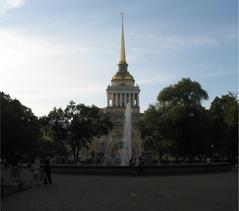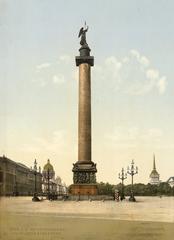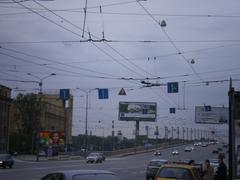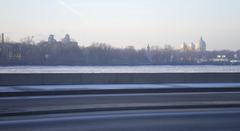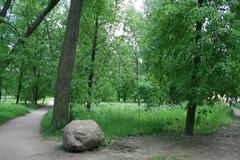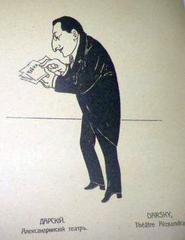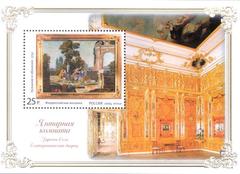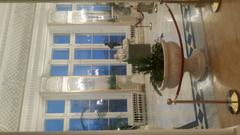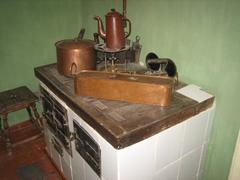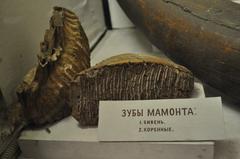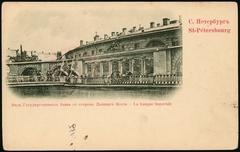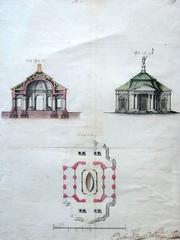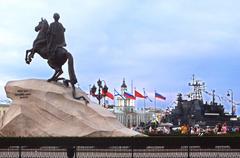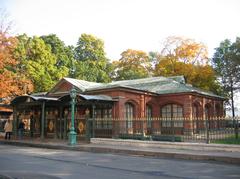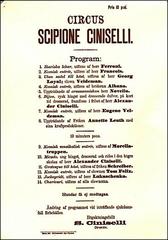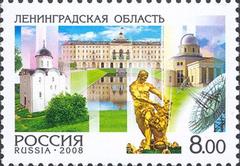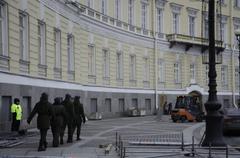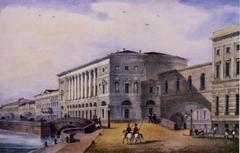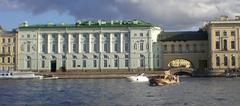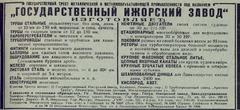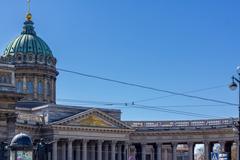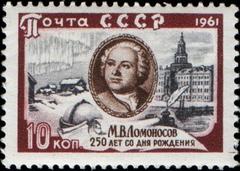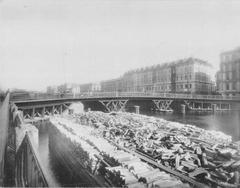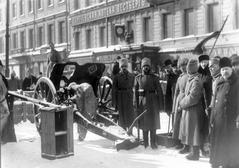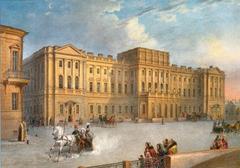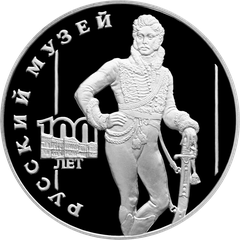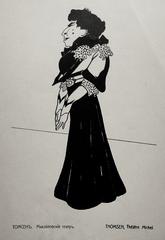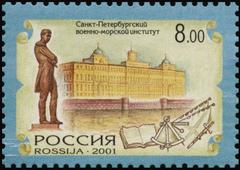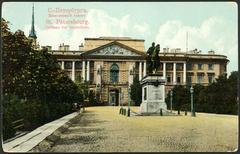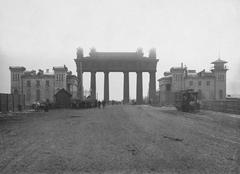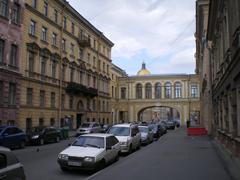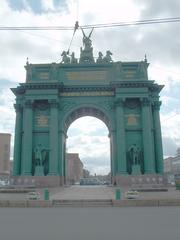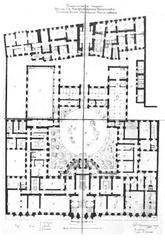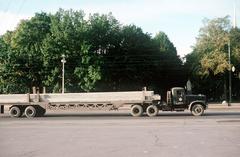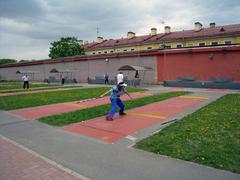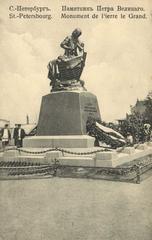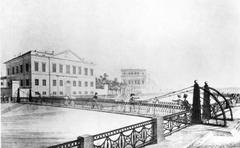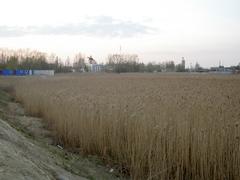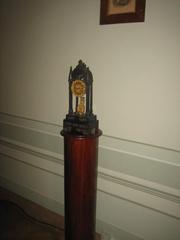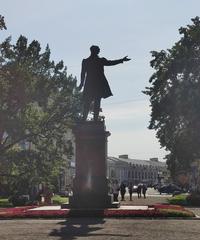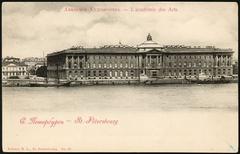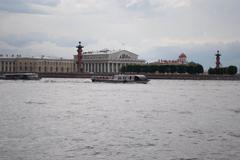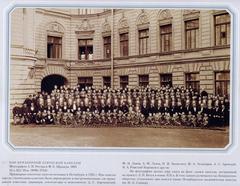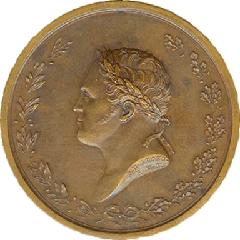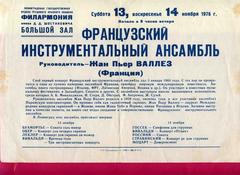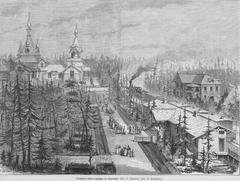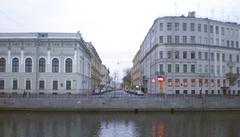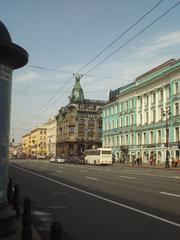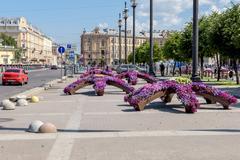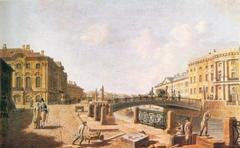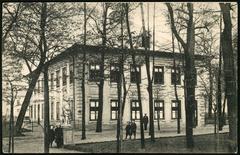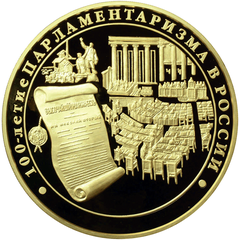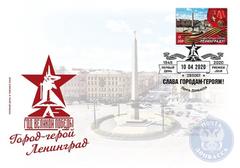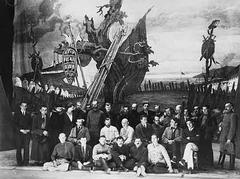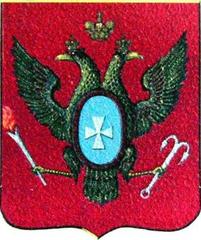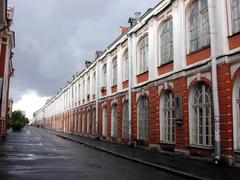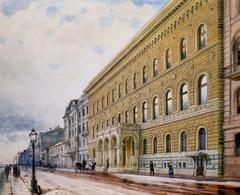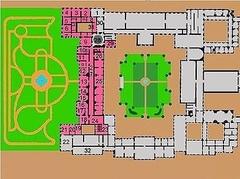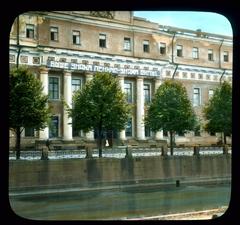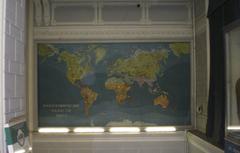Botanicheskaya Street, Saint Petersburg: Visiting Hours, Tickets, and Historical Sites Guide
Date: 04/07/2025
Introduction
Nestled on Aptekarsky Island in the Petrogradsky District, Botanicheskaya Street is a unique destination where Saint Petersburg’s scientific legacy, architectural heritage, and lush urban greenery converge. Closely associated with the historic Saint Petersburg Botanical Garden—founded by Peter the Great in 1714—this area reflects centuries of Russian dedication to botany, research, and urban culture. Today, Botanicheskaya Street and the adjacent Botanical Garden offer visitors a rich tapestry of history, elegant architecture, vibrant scientific institutions, and a serene natural setting (saint-petersburg.com; archtene.com).
This detailed guide covers everything you need to know for a memorable visit: opening hours, ticketing, accessibility, transportation, architectural highlights, nearby attractions, and practical tips for tourists. Whether you are a history enthusiast, architecture lover, or simply seeking a tranquil escape, Botanicheskaya Street promises a rewarding experience in the heart of Saint Petersburg (botsad-spb.com; binran.ru).
Table of Contents
- Historical Background and Urban Development
- Architectural Evolution
- Visiting Hours and Ticketing
- Getting There and Accessibility
- Notable Landmarks and Features
- Cultural and Scientific Significance
- Nearby Attractions
- Dining, Shopping, and Accommodation
- Safety and Visitor Tips
- Frequently Asked Questions (FAQ)
- Virtual Resources and Visual Aids
- Conclusion and Further Reading
Historical Background and Urban Development
Botanicheskaya Street traces its origins to the early 18th century, when Peter the Great established the Apothecary Garden (now the Saint Petersburg Botanical Garden) to advance medical science by cultivating medicinal plants. The street, developing around this institution, soon became home to scientists and academics, fostering a vibrant intellectual district within Saint Petersburg (saint-petersburg.com; binran.ru).
Throughout its history, Botanicheskaya Street has mirrored the city’s evolution—from the imperial era’s scientific ambitions to modern revitalization efforts that balance preservation with contemporary needs.
Architectural Evolution
18th–19th Century: Imperial Grandeur
Early constructions were modest, serving staff and scholars of the Botanical Garden. By the 19th century, neoclassical and eclectic styles took hold, with academic buildings designed to harmonize with the garden’s greenhouses and arboretum (archtene.com).
Early 20th Century: Art Nouveau and Modernism
Art Nouveau added ornate facades and flowing lines, while the growth of residential and institutional buildings brought a human scale and garden-like atmosphere to the street.
Soviet Era: Functionalism
The Soviet period introduced functionalist architecture, prioritizing efficiency and urban housing. Despite these changes, the Botanical Garden remained a center for scientific research, and green spaces continued to define the district.
Post-Soviet and Contemporary Trends
Restoration and sustainable development have revitalized historic facades and enhanced public spaces. New low-rise projects respect the street’s established character and scale (archtene.com).
Visiting Hours and Ticketing
Botanicheskaya Street
- Access: Public street, open year-round, 24/7.
Saint Petersburg Botanical Garden
- Typical Hours: Daily from 10:00 AM to 7:00 PM, with possible extended hours for special events. Seasonal variations may apply (saint-petersburg.com; binran.ru).
- Greenhouses: May have separate or reduced hours; check the official website for updates.
- Admission: 200–400 RUB for adults; discounted rates for students, seniors, and children. Special exhibitions or tours may incur additional charges.
- Tickets: Purchase onsite or online via the official website.
Getting There and Accessibility
- Location: Aptekarsky Island, easily accessed from central Saint Petersburg.
- Metro: Closest stations are Petrogradskaya (Line 2) and Gorkovskaya, each a short walk or bus/tram ride away.
- Public Transport: Multiple bus and tram routes serve the area (travellikeaboss.org).
- Taxis/Rideshare: Yandex Taxi and similar services are safe and reliable.
- Accessibility: Sidewalks and main paths are well-maintained; ramps exist at key entrances, though some historic buildings may have limited access.
Notable Landmarks and Features
Saint Petersburg Botanical Garden
- Established: 1714; one of Russia’s oldest and largest botanical gardens (Trip101).
- Collections: Over 7,500 species, including rare and endangered plants.
- Greenhouses: Historic 19th-century Palm Greenhouse, Cactus Pavilion, and themed areas such as the Japanese Garden and Alpine Hill.
- Arboretum: Features both English and formal European garden styles.
Komarov Botanical Institute
- Role: Premier center for botanical research, managing the garden and housing a herbarium with over 7 million specimens (binran.ru).
Residential and Institutional Architecture
- Style: Mix of neoclassical, Art Nouveau, and Soviet-era buildings, many with decorative balconies and ornate entryways (archtene.com).
Streetscape
- Features: Tree-lined avenues, landscaped courtyards, and commemorative plaques honoring notable scientists.
Cultural and Scientific Significance
Botanicheskaya Street’s identity is inseparable from the Botanical Garden’s legacy. For over 300 years, it has fostered botanical research, conservation, and public education. The garden hosts popular events such as the “Queen of the Night” bloom, drawing visitors citywide, and remains a central hub for academic exchange and cultural life (saint-petersburg.com).
Nearby Attractions
- Peter and Paul Fortress: Iconic historical site on the Petrograd Side.
- Leningrad Zoo: Family-friendly attraction nearby.
- Neva River Embankments: Scenic walks and boat tours.
- Kirov Central Park and Yelagin Island: Parks offering recreation and cultural events (Trip101).
- Institute of Russian Literature: Home to valuable literary manuscripts.
Dining, Shopping, and Accommodation
- Dining: The area features cafes offering Russian classics (borscht, pelmeni, blini) and international cuisine. Vegetarian options are increasingly available (saint-petersburg.com).
- Shopping: Souvenir shops near the garden sell Matryoshka dolls, amber jewelry, and artisanal crafts (thetouristchecklist.com).
- Accommodation: Ranges from luxury hotels to budget hostels and family-run guesthouses. Book in advance during peak periods like the White Nights (araioflight.com).
Safety and Visitor Tips
- Safety: The area is well-patrolled; petty theft can occur in crowded spots, so keep valuables secure (travellikeaboss.org).
- Language: Most signage is in Russian; translation apps are useful.
- Tipping: 10% in cafes/restaurants if not included.
- Water: Drink bottled water rather than tap.
- Weather: Be prepared for variable weather—pack layers and a raincoat, especially in July (wanderlog.com).
- Connectivity: Free Wi-Fi is common in cafes and hotels; local SIM cards are available for extended stays.
- Accessibility: The garden is increasingly accessible, but some older buildings may be challenging for those with mobility issues.
Frequently Asked Questions (FAQ)
Q: Is Botanicheskaya Street free to visit?
A: Yes, it is a public thoroughfare open 24/7. Admission fees apply only to attractions like the Botanical Garden.
Q: What are the Botanical Garden’s visiting hours?
A: Generally 10:00 AM–7:00 PM, with seasonal adjustments. Check the official site for current hours.
Q: Are tickets required for the Botanical Garden?
A: Yes. Prices range from 200–400 RUB; discounts are available.
Q: Are guided tours available?
A: Yes, in multiple languages. Advance booking is recommended.
Q: Is the garden accessible for visitors with disabilities?
A: Many areas are accessible, though some greenhouses or historic buildings may have limitations.
Q: Can I take photographs?
A: Photography is generally allowed. Tripods or professional equipment may require prior permission.
Virtual Resources and Visual Aids
- Virtual Tours: Explore the garden virtually via the official website.
- Interactive Maps: Available online to help plan your route and highlight key sites.
- Photo Galleries: High-quality images with descriptive alt tags showcase seasonal highlights and historical features.
Conclusion
Botanicheskaya Street and the Saint Petersburg Botanical Garden offer an immersive journey through the city’s scientific, cultural, and architectural past and present. With accessible facilities, diverse programs, and a wealth of attractions nearby, this area is ideal for curious travelers and scholars alike. Plan your visit during spring or summer for vibrant blooms and special events, and make use of guided tours and digital resources for a deeper experience.
Download the Audiala app for expert audio tours, updates, and more travel inspiration. For further reading and detailed planning, refer to the official links and resources listed below.
References and Further Reading
- Visiting Botanicheskaya Street: Hours, Tickets & Saint Petersburg’s Historic Botanical Garden, 2025, (saint-petersburg.com)
- Visiting Botanicheskaya Street and Saint Petersburg Botanical Garden: Hours, Tickets & Insider Tips, 2025, (binran.ru)
- Saint Petersburg Botanical Garden Visiting Hours, Tickets, and Historical Sites: A Complete Visitor Guide, 2025, (binran.ru)
- Visiting Botanicheskaya Street, Saint Petersburg: Hours, Tickets, and Insider Tips for Tourists, 2025, (travellikeaboss.org)
- Saint Petersburg Botanical Garden official website, 2025, (botsad-spb.com)
- Architectural Evolution in Saint Petersburg, 2025, (archtene.com)
- Beautiful Parks and Gardens in Saint Petersburg (Trip101)
- Yelagin Island and Kirov Central Park (Trip101)
- Top Attractions in Saint Petersburg (araioflight.com)
- Things to Do in Saint Petersburg (thetouristchecklist.com)
- St. Petersburg in July (wanderlog.com)
- Rough Guides to Saint Petersburg (Rough Guides)
